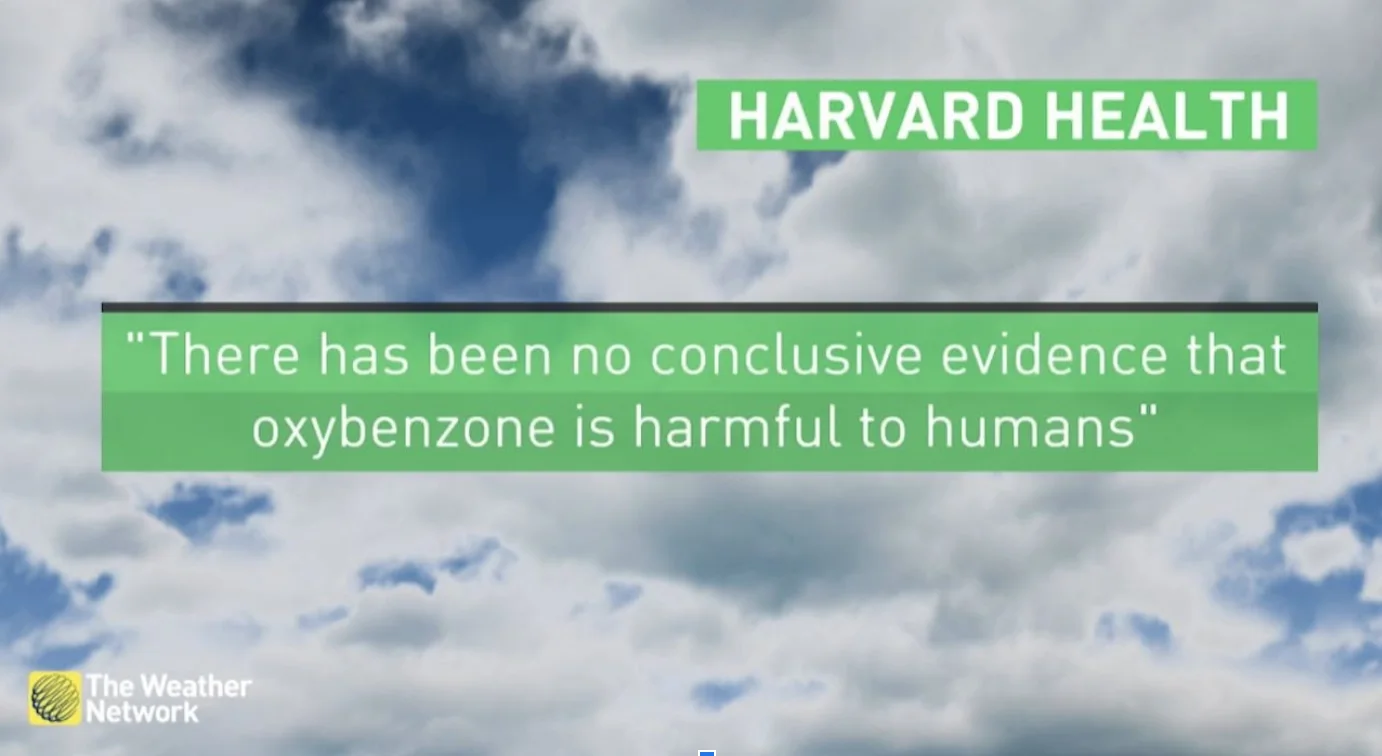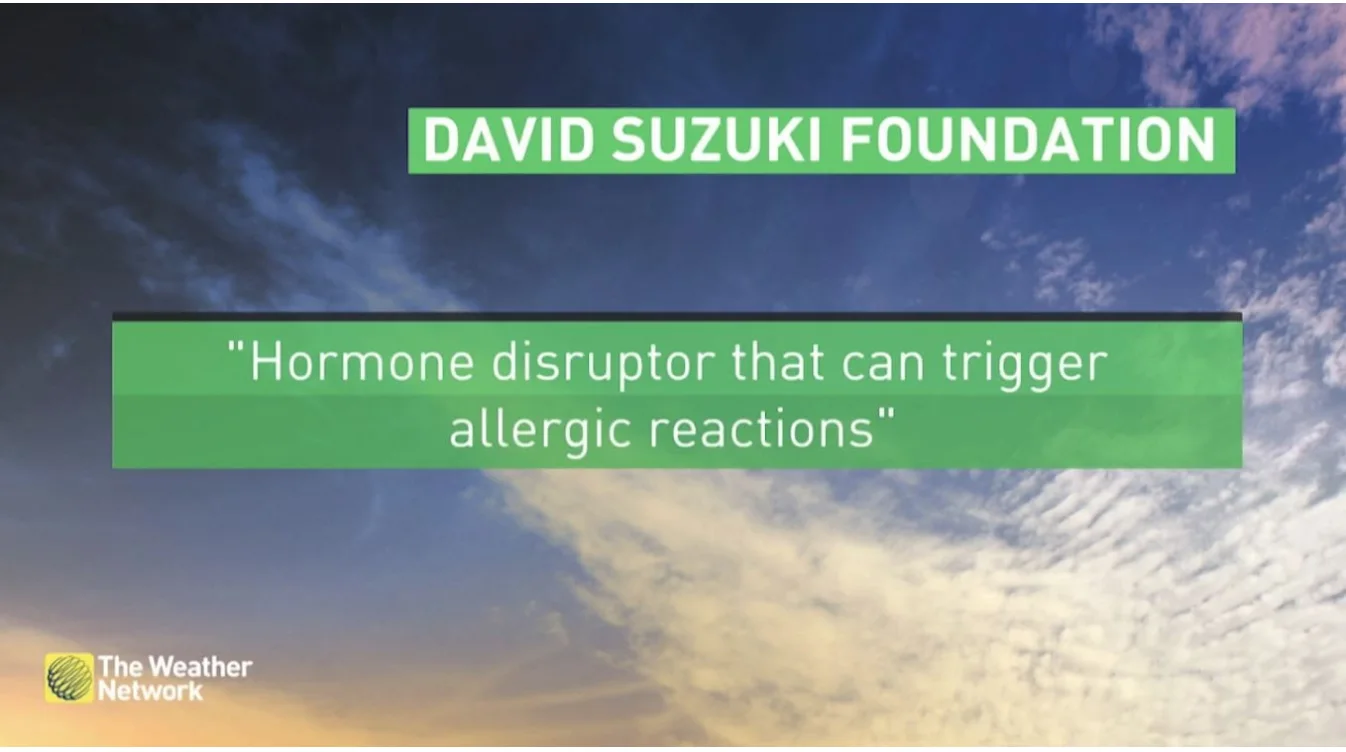
Is oxybenzone really that bad? Confusion surrounds this UV blocking chemical
There are environmental and human health concerns in relation to oxybenzone, which is a common chemical found in sunscreen. The Weather Network's Rachel Schoutsen explains.
If you're using a chemical sunscreen, there is a good chance it contains oxybenzone.
Oxybenzone is used in sunscreen because it has the ability to filter out UV rays and protect the skin. Essentially, it prevents you from getting a burn.
I wanted to learn more about this chemical's impact on human health and also the environment. However, after uncovering many debates about oxybenzone, I now realize why there has been so much controversy.
Depending on who you ask, oxybenzone will either be praised for its antiaging effects and protection of the skin -- or highly criticized for its health and environmental risks.
Why is it bad for the environment?
If you ask someone in Hawaii what they think about oxybenzone, they likely will hit you with the fact that their government has banned all sunscreens with oxybenzone on their beaches. This should go into effect by January 2021.

Beach in Hawaii. Courtesy: VideoBlocks
So why is Hawaii so strict about oxybenzone use?
Environmental experts say oxybenzone has been a catalyst in coral bleaching, and is said to have accumulated in toxic levels in some marine life.
“Oxybenzone has been this chemical that we have been finding in numerous products on the market," explains Muhannad Malas, Toxics Program Manager at Environmental Defence. "And what the science is finding is that this is probably not a good idea.”
Malas adds that the remaining sunscreen that does not go into your body, gets washed off and enters the environment.
"Studies are showing that the levels of oxybenzone that are entering our environment are contributing to coral reef bleaching and it is also impacting the development of aquatic organisms such as fish, mammals like dolphins and even things like mussels and sea urchins.”
One of the issues that Malas also pointed out was this chemical's ability to bioaccumulate. This means the concentration of the chemical only increases within a body as it continues to be exposed.
There is not much research when it comes to oxybenzone and it’s specific risks to Canadian wildlife, but “the risks can be translated to Canada in terms of our aquatic life on both coasts,” explains Malas.
RELATED VIDEO: IS DEET SAFE?
Is oxybenzone bad for humans?
Now this is where things get very interesting. And debatable.
After finding so much supporting evidence about oxybenzone being bad for the environment, I thought I would go down a similar path when it comes to this chemical and human health.
However, things did not line up that way.
First I reached out to pharmacist Victor Wong, who presented to me a study that Health Canada did on sunscreen in 2018 (updated in 2020).
“Health Canada considers sunscreens, even with chemicals, safe to use," Wong told me. "The study looked at lotions with oxybenzone and did not draw any attention to this chemical being an issue to human health.”
He also brought an American study to the table stating.
“In a small 2019 study published in the the Journal of the American Medical Association, the active ingredients of various chemical sunscreens, like oxybenzone, was found to be absorbed through the skin and into the body under maximum use conditions (i.e. applied to 75% of the body surface area, 4 times daily, for 4 days). However, this does not necessarily mean that these sunscreens are unsafe, and further study is required to see if this has any real clinical effect on human health.”
Many reputable organizations, like Harvard Health, have their own opinions on this chemical, stating “there has been no conclusive evidence that oxybenzone is harmful to humans.”

In another study done in 2003, researchers found that about 97 per cent of Americans have some concentration of oxybenzone in their system. However, still to this day, there has not been strong conclusive evidence that this has had any negative health-related consequences.
Most studies try to connect oxybenzone to disrupting hormone functions. The David Suzuki Foundation made that connection by calling oxybenzone “dangerous” and “hormone disruptor that can also trigger allergic reactions.”

The Environmental Working Group also tried to highlight health concerns in humans by claiming that the U.S. Food and Drug Administration used insufficient health and safety data when finalizing their report on safe sunscreens.
When it comes to cancer risks, reports have suggested oxybenzone could be linked to cell-damage causing cancer, however, the Canadian Cancer Society does not completely agree with this claim.
"A small number of research studies have shown that oxybenzone can cause minor changes to cells in a petri dish – but there is currently no evidence linking it to cancer. The research on oxybenzone is limited, but no animal or human studies suggest that it might cause cancer," says the health agency on their website.
As my research continues, I do expect to find more conflicting advice when it comes to human health and oxybenzone.
Want to avoid oxybenzone? Here's how
“Canadians may opt to try mineral sunscreens on the market that may have less risk of systemic absorption,” suggests Wong. “These include sunscreens that contain zinc oxide and titanium dioxide. However, these sunscreens may sometimes leave a white film on the skin that some people may find cosmetically unappealing. Regardless of the type of sunscreen, Canadians should still practice sun safety by covering up, limiting their time in the sun especially during 11 a.m. to 3 p.m., use some type of broad spectrum sunscreen of 30 SPF or higher, check the UV index forecast, drink plenty of liquids on hot days, and avoid tanning.”
It seems like this common chemical found in sunscreen needs to be studied further to draw more conclusive connections to its impact on human health. And I would also like to see more data that Canadians can use in order to see how it may be harming our beaches, waterways and aquatic life.
Stay tuned as I continue with this research!






